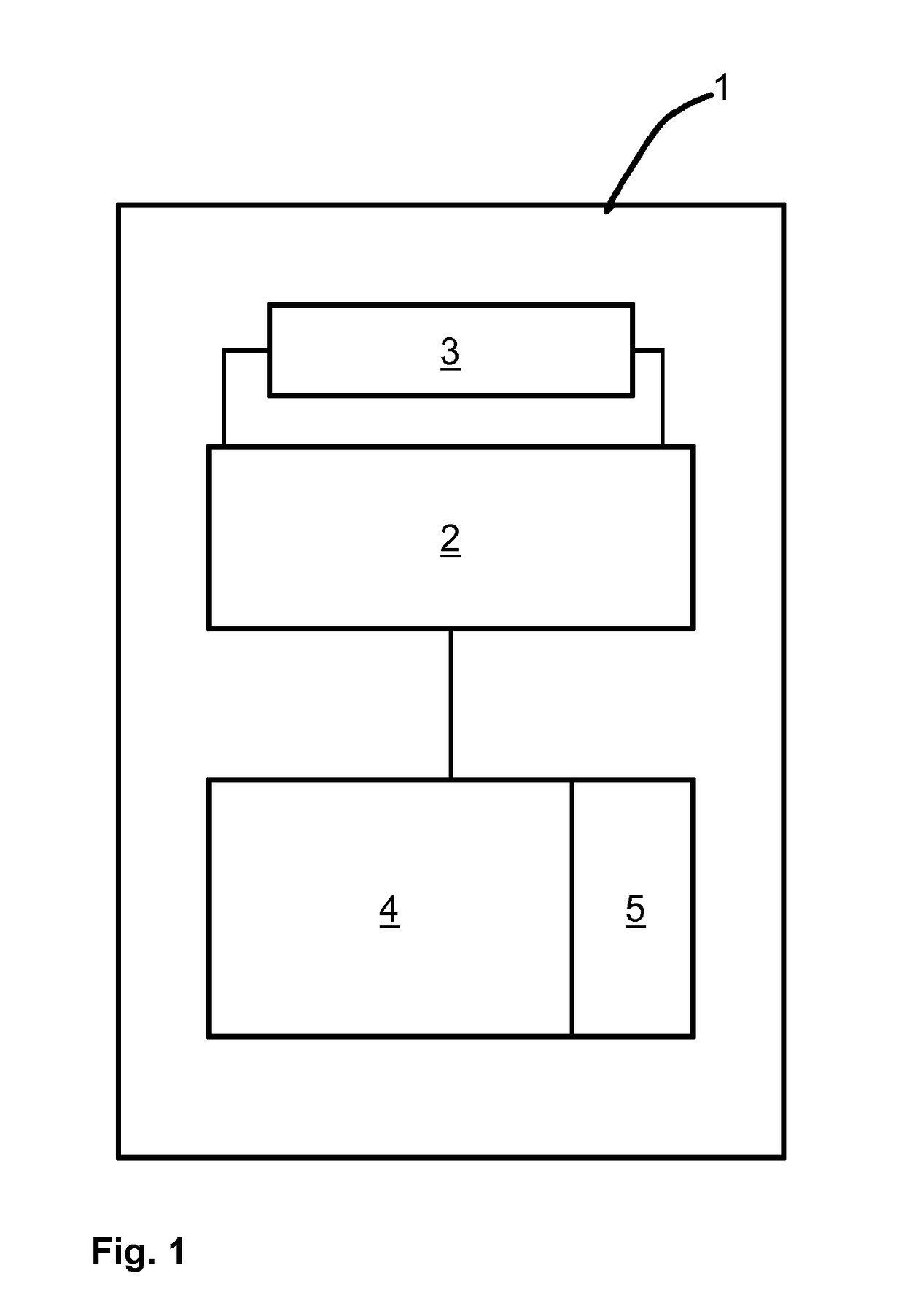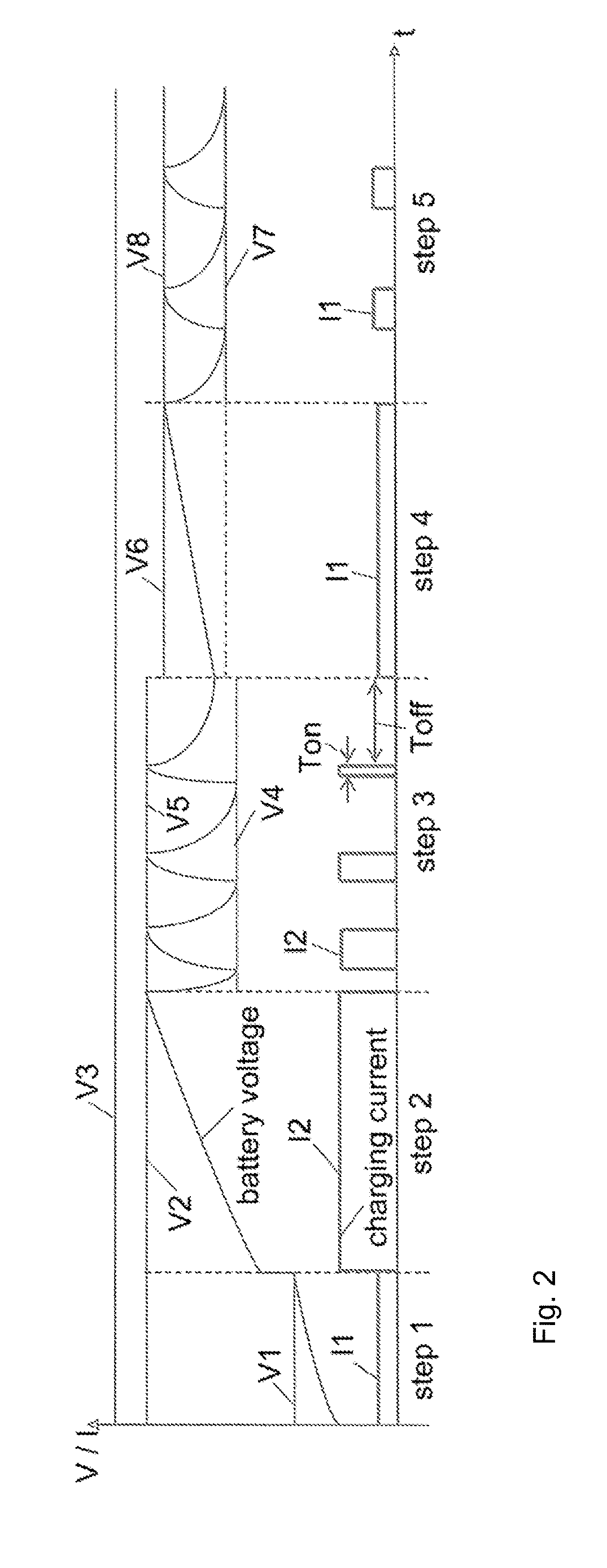Method for charging a rechargeable battery of an electric device
a rechargeable battery and electric device technology, applied in electric power, electric vehicles, transportation and packaging, etc., can solve the problems of reducing the life of the battery, no effective charging in the third charging step, and worse electromagnetic compatibility (emc), so as to reduce the charging capacity, reduce the charging current, and increase the charging state
- Summary
- Abstract
- Description
- Claims
- Application Information
AI Technical Summary
Benefits of technology
Problems solved by technology
Method used
Image
Examples
Embodiment Construction
[0038]According to a preferred embodiment of the electric device an apparatus 1 is proposed having a charger 2, a rechargeable battery 3 to be charged by said charger 2 and a processor 4 with a memory 5, the processor 5 being adapted to control the charging of the battery 3. The processor 2 is adapted to perform the method for charging a rechargeable battery of an electric device as described later for a specific embodiment.
[0039]The apparatus 1 might be an electric toothbrush, an epilator, a mixer, an electric shaver or the like appliance used regularly in daily life for quite a short period during the day. The use of the appliance for quite a short period during the day means that a typical use of the appliance lasts 1 to 5 or 1 to 15 minutes. Further, the appliance might be used once a day or a few times a time, the number of usage per day typically not exceeding 5 to 10 or 15.
[0040]According to an embodiment not shown, the charger might be integrated in a separate docking statio...
PUM
 Login to View More
Login to View More Abstract
Description
Claims
Application Information
 Login to View More
Login to View More - R&D
- Intellectual Property
- Life Sciences
- Materials
- Tech Scout
- Unparalleled Data Quality
- Higher Quality Content
- 60% Fewer Hallucinations
Browse by: Latest US Patents, China's latest patents, Technical Efficacy Thesaurus, Application Domain, Technology Topic, Popular Technical Reports.
© 2025 PatSnap. All rights reserved.Legal|Privacy policy|Modern Slavery Act Transparency Statement|Sitemap|About US| Contact US: help@patsnap.com



